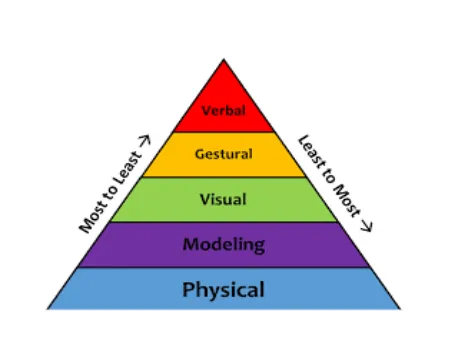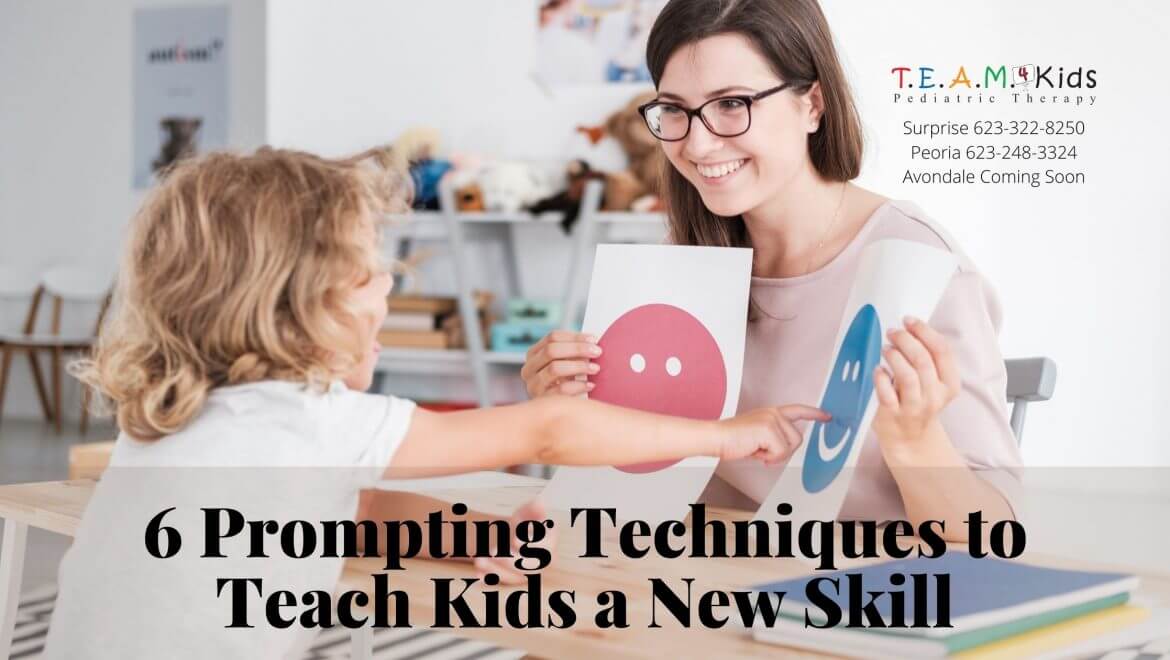Do you have trouble teaching your child a new activity or a new skill?
When teaching your learner a new task, the best thing you can perform is prompting. Prompting refers to the level of instruction you give your child when you ask them to complete a task. This can be a visual, verbal, or physical cue. Below are different prompting techniques you can do to encourage learning and development of tasks.
- Verbal Prompting: Verbal assistance given that helps the learner use target skills correctly such as spoken words, signs, or statements. A verbal prompt involves telling the learner the answer, giving a verbal cue, such as the beginning sound of the answer, and/or giving the direction more than once.
- Gestural Prompting: Gestural prompting is a point, hand gesture, or head nod to encourage participation normally prompted by a natural cue. A good example for gestural prompting is when helping the learner get dressed, give your learner socks and point to his/her feet.
- Visual Prompting: A visual prompt includes pictures, photographs, or objects that provide the learner with information about how to use the target skill or behavior. An example of visual prompting is using a washcloth or a picture of a washcloth as the cue to pick up the washcloth to wash face.
- Model Prompting: A model prompt includes either performing the target skill for the learner or showing the learner what to do. A good example is like brushing teeth or washing your hands. When using model prompts, adults demonstrate (or model) the target skill.
- Physical Prompting: There are 2 types of physical prompting: partial and full physical. Partial physical prompting provides some assistance to guide the learner through part of the requested activity. Ask the learner, “Clap your hands.” You will prompt the learner by gently touching each of the learner’s two hands and gently nudging the learner’s hands toward each other. Full physical prompt is where you provide physical contact to guide the learner through the entire requested activity. You prompt the learner by holding each of the learner’s hands in his/hers then moving the learner’s hands through the entire action of hand clapping. Physical prompting is often the most effective form of learning how to perform new tasks.
Prompting is one of the most important and the most helpful guidance in a learner’s success. RBT’S use these techniques everyday and see a huge impact in time and in the learner’s development. Thank you for taking the time to read. If you have any questions or concerns, please reach out to us at TEAM 4 Kids for an evaluation!

McKenzie Mitton, RBT

